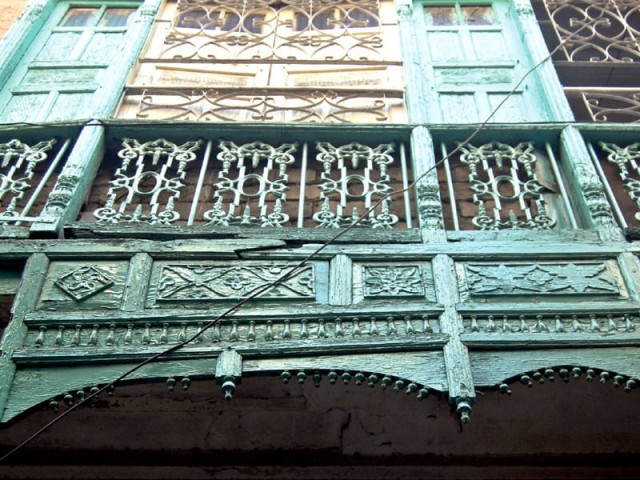Pindi’s architectural heritage - part 1: History in a shambles
From facades adorned with symbols of gods and intricately designed motifs, a nostalgic drip down memory lane.

Pindi’s architectural heritage - part 1: History in a shambles
It is a tolerable summer morning in Pindi. Aziz Khan, a professor from the Saddar area, in this chaotic urban centre, guides The Express Tribune through Pindi’s incredibly intricate but decorative architectural work amid a warren of narrow streets.
His nostalgically-delivered introductory statement on the subject is marvellous. “Name a place — Babu Bazaar, Bazazaan Gali, Bara Bazaar, Prem Gali, Kabari Bazaar, Namakmandi, Bhosa Mandi or Dharampura Road — and you will find an abundance of historic buildings there.”
The fact that Rawalpindi boasts a plethora of historic buildings, both religious and secular in nature, should come as no surprise to anyone, according to the professor. Temples, shrines, churches, rest houses, compounds, markets and schools with structural designs dating from the 1850s are showcases of the fine skill of designers and architects of that era.
“These buildings are known for the figurines that adorn their façades and walls. Nearly all the walls of these buildings are covered with exquisite carvings that narrate stories of Vishnu’s incarnations, the adventures of Hanuman the Monkey King and other Hindu beliefs based on the theme of sacred animals like elephants, snakes, peacocks, deer and parrots,” Khan adds.
Explaining further, he says: “Multitudes of carved imagery, sculpted images of deities and pictures from mythology decorate them. Panels, niches and friezes contain images of men and women in all conceivable postures including nagas (mythical multi-headed cobras that protect sacred places) representations of Hindu gods. The gods can often be identified by attributes — Vishnu with a conch and Shiva with a trident — or by their mounts, as Durga usually rides a lion while Ganesh has a mouse.”
There are dozens of buildings built between 1850 and 1920 in the Cantonment area alone. All the buildings have arch-type facades with round pillars and also have elevated floor on both sides of the main entrance especially built to place goods that visitors have brought, thus making the buildings culturally relevant.
The facades also have recesses on both sides to keep a candle for night visitors. Most of the buildings have loped roofs and slats for windows so that rainwater doesn’t collect there, according to Professor Aziz.
Delineating further upon the subject, he describes the buildings as being “made from slender bricks, coloured glass and timber, reflecting the traditional building style. As public architecture is supposed to identify and solve practical problems of human interaction in the built environment, therefore, these buildings have viewing decks on the upper floors which were probably built as lookout posts. On the rooftops, big bowls are set up to store water for birds.”
While arriving at the Sanatan Dharam School building, Mangat Ram Agarwal building, Sahni and Sohan building, which are adorned on the outside with carvings of Hindu gods and goddesses and scenes from the Mahabharata and the Ramayana, Aziz Khan says, “The buildings’ architecture combines harmony and symmetry with a high degree of outer adornment.
“Elements are designed to have correct proportions and exert a positive influence on their surroundings. What makes the architecture so beautiful as a whole is the way small details harmonise and mix with the massive architecture.”
Close to Ahata Shamsabad exist the remnants of Kali Baari (a Hindu deity), where once stood an elevated platform. It contained many rooms, including one where Kali Baari was kept and brought outside on the occasion of Vijayadashami/ Dasara and Diwali, and a black goat used to be sacrificed before the deity.
It also had an altar where prasad (offerings) were left, and a sacred pool and tanks filled with water. Water is regarded as important element in making the mandir (temple) attractive for deities.
Then there is the Thapar Asharam in old Babu Bazaar, which was built nine decades ago. It features a unique architectural style and fashionable wooden balconies with intricately designed motifs. Unfortunately, its exterior adornments and beautiful paintings on the interior walls are not in good health. A trader has purchased it now and is using it as storehouse.
Like much of Pindi’s history, it too “may be demolished any time,” Aziz expressed.
Published in The Express Tribune, July 7th, 2012.


















COMMENTS
Comments are moderated and generally will be posted if they are on-topic and not abusive.
For more information, please see our Comments FAQ